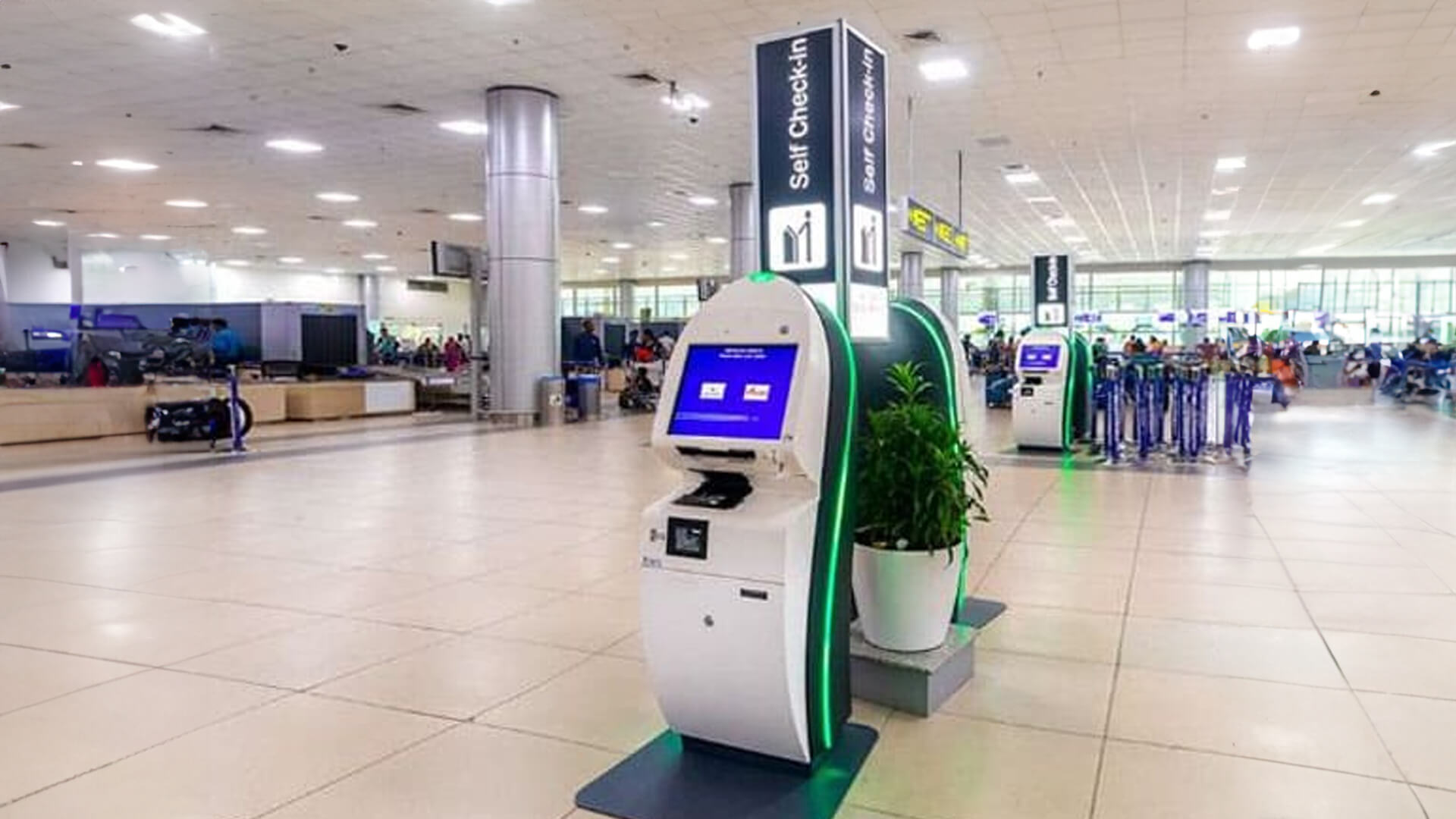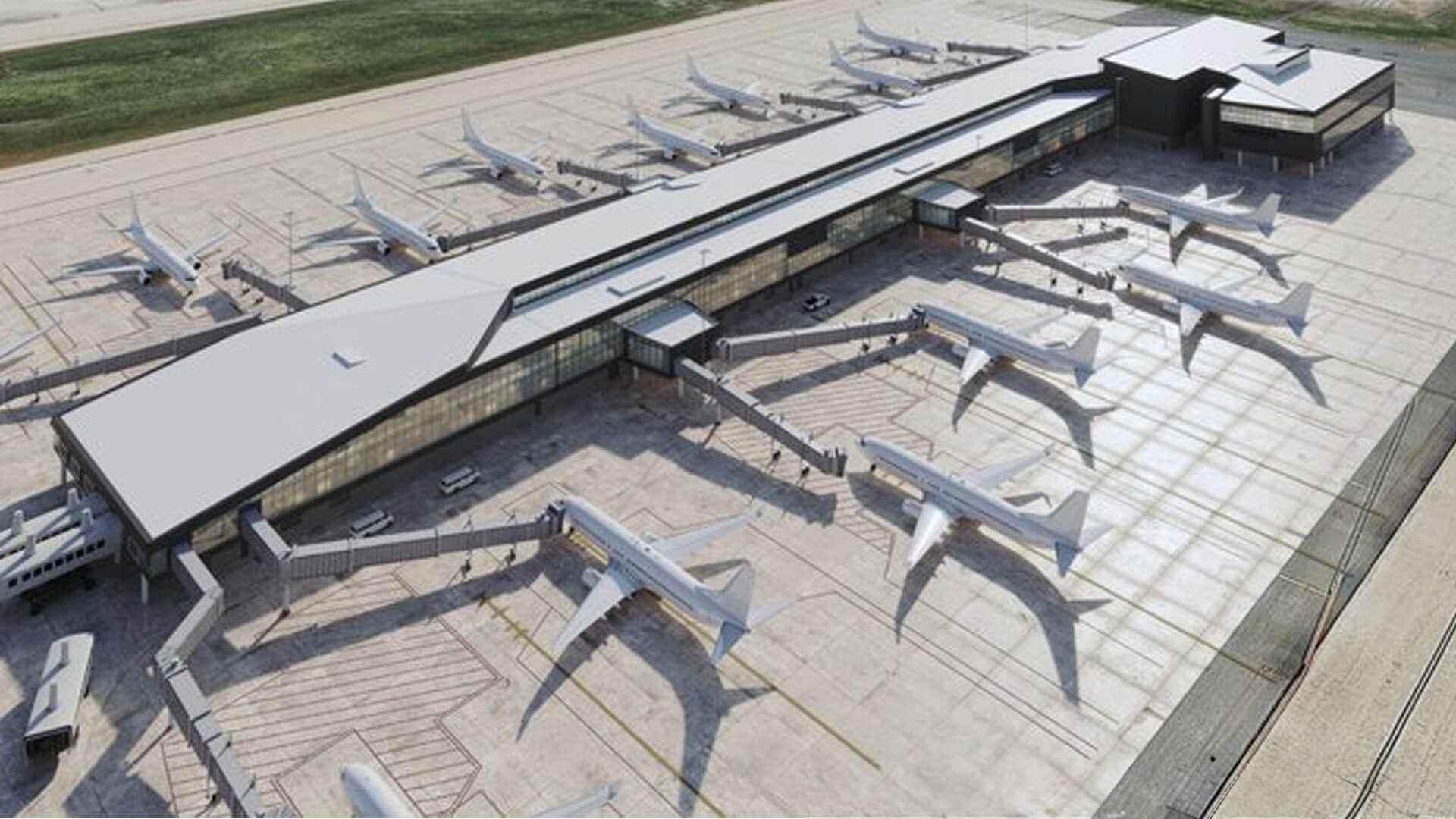
Dec 13 2024
5 min read

As of May 2024, India has witnessed a record high of 43.62 million air passengers . With this surge in air travel, there is an increasing demand for improved infrastructure to keep up with the growing aviation sector. Airports across the country are expanding and upgrading to handle more passengers while offering enhanced services. This expansion has led to the development of some of the largest airports in the nation. In this blog, we’ll take a closer look at the top 10 largest airports in India.

Rajiv Gandhi Airport is the largest airport in India, built across a huge area of 5500 acres. The airport was inaugurated back on March 23, in Hyderabad, Telangana, India. The airport is also ranked in AirHelp’s list of top 10 airports in the world .
RGIA has also taken significant steps towards sustainable initiative switching to 100% of its power usage to renewable energy. By doing so, the airport is now capable of reducing carbon emissions by around 9,300 tons each year .
RGIA is technically ahead; it is probably the first airport in the country to have domestic e-boarding in 2015, and later have international e-boarding in 2020.
Present in the heart of the capital of India, Indira Gandhi International Airport is named after the former prime minister of India, Mrs. Indira Gandhi. It is the second largest airport in India, with an area of 5106 acres. IGIA is one of the busiest airports in the world, and recorded around 72 million passengers in 2023. Seeing the passenger count, the airport authorities decided to expand the airport to handle 100 million passengers by 2030. IGIA is also recorded as India’s first airport to have 4 runways.
Founded in May 2008, Kempegowda International Airport is situated in Bangalore, the capital city of Karnataka. The airport was formerly known as “Bangalore International Airport” but later renamed after the founder of Bangalore, Kempe Gowda I.
The airport is spread over 4000 acres, connecting direct flights to all the inhabited continents of the world, except South America. The KIA has two parallel runways allowing simultaneous take-off and landing of two different flights.
KIA’s new Terminal 2, opened in 2022, showcases impressive engineering with its use of bamboo in construction. The design in the ceiling, check-in corridor, and throughout the terminal feature almost 600,000 live plants in it. Moreover, the entire design is inspired by and serves as a tribute to Bangalore’s “Garden City.”

Located in Pernem Taluka, Goa, Manohar International Air is spread across 2132 acres. The airport was completed and inaugurated in 2023, built at a cost of $380 million. Currently, MIA can handle nearly 4.4 million passengers every year, while the airport authorities scheduled phases of expansion and development to reach the target of 13.1 million passengers capacity by 2025.
In 2024, the Airport Authority of India(AAI) enabled Digiyatra , a Biometric-enabled seamless travel experience, which helps to make your security checks and boarding easy with facial recognition and an entire digital setup on kiosks.
Also read: How these largest airports are adapting to airport wayfinding signage
Dabolim Airport is located in Panaji, the capital city of Goa. Opened back in 1955 during the Portuguese colonial time, the airport was built in an area of 1700 acres. The design of Dabolim Airport is an engineering marvel inspired by the concept of “The Wave,” symbolizing freedom. The terminal features extensive use of beautiful glass, creating a seamless, frameless glazing effect.
Dabolim Airport received a decline in passenger counts after the completion of the new airport, Manohar International Airport, in the state. About the amenities, the airport has 75 check-in counters, 14 security check booths, and space to handle around 5 million passengers annually.
Named after one of the prominent freedom fighter of India, Subash Chandra Bose, it is one of the oldest airports in India. Founded back in 1924, the airport has a profound history and played a significant role in the Second World War. Netaji Subhash Chandra Bose International Airport is situated in Kolkata, in the heart of West Bengal, and occupies an area of 1640 acres.
The airport has two parallel runways, and inaugurated a new terminal in 2012, which increases the passenger capacity by 25 million annually.
Also read: A look at the top 7 largest railway station in India

Birsa Munda Airport, situated in Ranchi, Jharkhand, is a domestic airport founded back in 24 March 2013. The name of the airport is inspired by the tribal freedom fighters Birsa Munda, responsible for various independence moments in Jharkhand. BMA spans across 1568 acres, and is capable of handling 2.5 million passengers annually. Although it’s a domestic airport and demands major improvement, it is also the first tier-II airport in India that has in total 8 aircraft parking bays after AAI added 3 more parking bays in 2022.

Chhatrapati Shivaji Maharaj International Airport is one of the busiest airports in the world and comes second in India after Indira Gandhi International Airport in terms of passenger traffic. Situated in Mumbai, Maharashtra, CSMIA covered an area of 1500 acres.
Formerly, the airport was known as “Sahara Airport,” later renamed after the prominent Maratha king Chhatrapati Shivaji Maharaj. The airport also features the Jai He Art Hall, which is a 3 km long installation with 7000 artworks representing Indian art and culture.
Dr. Babasaheb Ambedkar International Airport is another popular airport in Maharashtra, situated in Sonegaon, southwest Nagpur. The airport is named after the father of the Indian constitution, Dr. Babasaheb Ambedkar.
Span across 1355 acres, the airport, equipped with modern facilities and infrastructure, handles around 8500 passengers every day. The airport is also included in the MIHAN project, which increases its chances of becoming the main international cargo and passenger hub in central India.
Cochin International Airport is located in Kochi, Kerala, in the southwestern part of India. It is the 8th busiest airport of India in terms of passenger traffic, which spans across 1124 acres. Additionally, Cochin International Airport is the irst fully solar-powered airport in the globe f, with over 46,000 solar panels.
CIAL, the governing authority of Cochin International Airport, received the ‘Champions of the Earth’ award from the UN for their efforts towards sustainable efforts towards energy consumption.
Airports handle a large volume of passengers globally, requiring strict security checks to ensure safety. They are also among the most expensive transportation hubs, utilizing advanced technologies to enhance both security and passenger satisfaction. Below are some of the key technologies used in the airports:

Digital signage is the most important element in airports in terms of providing information and guidance. Starting from flight information, advertisement, and emergency warning, solely handled through digital signage platforms. It is also a vital tool to use for wayfinding, allowing passengers to navigate and locate the various corners of the airport.
Self-service kiosks in the airports used for the check-in process allow passengers to print their boarding passes and choose their seats as well.

Biometric authentication technologies like facial recognition and fingerprint scanning are used for fast check-in, security checks, and boarding processes. For instance, Manohar International Airport, Kempegowda International Airport and few more airports have installed biometric based identification authentication technology, Digiyatra to provide a seamless travel experience to the passengers.
Airports are coming up with solar panels and various renewable energy sources to power the airport. For example, Cochin International Airport is fully powered by solar energy, producing 12 MW of electricity. Additionally, Delhi’s IGIA was tagged as the first single-use plastic-free airport in India in 2020.
Also check: Pickcel's Transportaion Digital Signage Solution for Airports
The largest airports in India not only portray larger infrastructures but are also representative of growing technological advancements in the airline industry. In order to make the travel experience smooth and hassle-free, Indian airports are planning to shift to a more self-service digital approach. It will be interesting to the airport the upcoming revolution in airline technology where AI will be introduced to manage passenger flow, hyper-personalisation service for passengers, and smart baggage handling.





Dec 13 2024
5 min read

Dec 13 2024
8 min read

Dec 4 2024
7 min read

Nov 27 2024
5 min read
Take complete control of what you show on your digital signage & how you show it.
Start Free Trial Schedule My Demo